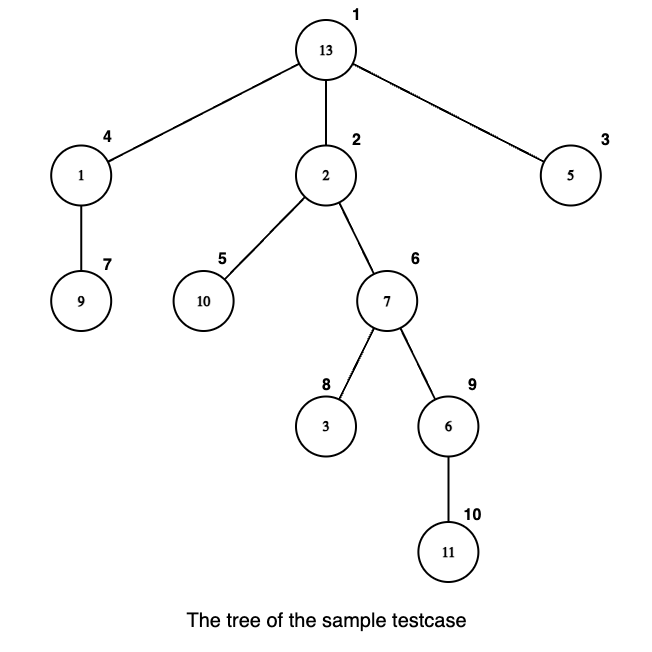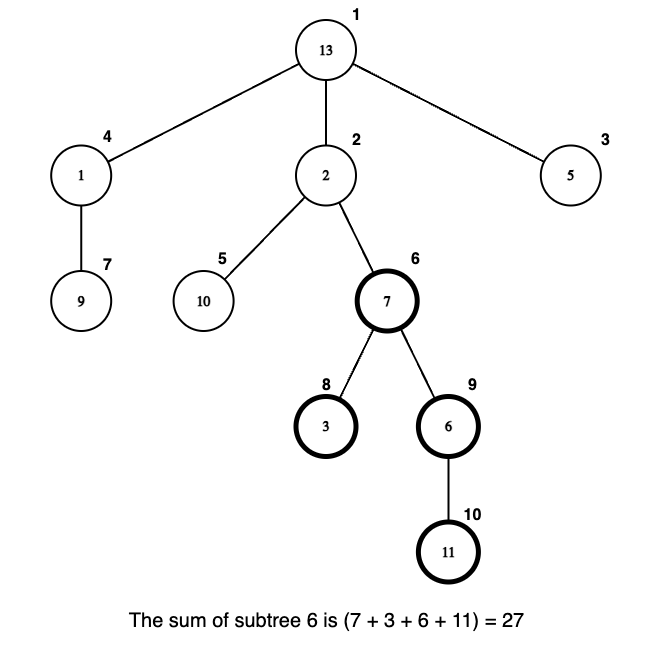| # | Problem | Pass Rate (passed user / total user) |
|---|---|---|
| 12544 | Simple Web Crawer |
|
| 13391 | Domo the Train Conductor |
|
| 13412 | I hate Christmas |
|
| 13751 | Super Idol |
|
| 14546 | Simple Tree Calculator |
|
| 14547 | Take leaves |
|
Description
A Web crawler, sometimes called a spider or spiderbot and often shortened to crawler, is an Internet bot that systematically browses the World Wide Web.
Generally, a Web crawler visits a website, reads the HTML code of the website, gathers information it wants, and probably wants to visit the links it found in this website.

For example, if a Web Crawler visits the wikipedia webpage introducing "Web crawer" (the webpage is shown in the left part of the image) ...
-
It reads the html code of the webpage (shown in the right part of the image)
-
It gathers information. For example,
-
It finds the definition of "Web Crawler"
-
It finds several links (i.e. the blue words in the webpage), such as links to "Internet bot", "World Wide Web", etc.
-
-
It probably wants to visit the links "Internet bot", "World Wide Web", ... one by one to get more information.
In this problem, you are going to implement a simple Web crawler. Given the html code of some website, you are going to output several information :
-
Title of the website
The title of the website is the string placed within <title> and </title>, for example, the title in sample input is "This is the title".
-
Numbers of links in this webpage
A link in html is in the following syntax : <a href="url">link text</a>, where url is the link address and link text is the text of the link.
Refer to the to Sample IO for output format.
Hints
-
What is html code?
-
In this problem, you only need to know that html code are several lines of strings in some special format.
-
html code are tags in the following format :
<tagname>contents of tag</tagname> -
In Chrome, you can press
F12key to see the html code of the website
-
-
How to read in html codes?
-
Some useful functions you've learned in previous homework 12507 - Searching Remark :
-
char *strtok(char *str, const char *delim)- to break stringstrinto a series of tokens using the delimiterdelim, which is defined understring.h -
char *fgets(char *str, int n, FILE *stream)- to read a string of lengthninto stringstrfrom a file streamstream(e.g.stdin), which is defined understdio.h
-
-
How to find title?
-
Why not start with finding the position of
<title>and</title>? The substring between<title>and</title>is the title of the website.
-
-
How to count links?
-
For every link in html, it must contains the substring
</a>. This problem can be solved by counting the number of occurrence of</a>.
-
Input
You will be given a HTML code. Input contains at most 100 lines. Each line contains at most 1000 characters.
Technical Restrictions
Only the following tags will appear in the input :
-
<html> </html> -
<head> </head> -
<body> </body> -
<title> </title> -
<a> </a> -
<h1> </h1> -
<p> </p>
All tags except for <head></head> and <body></body> will be on the same line.
In each case, there will be exactly one <head></head>, one <body></body>, one <title></title>.
It is guaranteed that the contents of tags will not contain '<' or '>'.
Output
For the first line, please output the title of the given website.
For the second line, please output the number of links in the given website.
Remember to add new line character in the end of each line.
Sample Input Download
Sample Output Download
Tags
Discuss
Description


Domo is a train conductor, he wants to adjust the train he's driving.
There are five instructions below with the description:
1. AddFront num
Add a train carriage with the index num in front of the train.
2. AddBack num
Add a train carriage with the index num in back of the train.
3. Delete num
Delete all the train carriages with the index num from the train. (If the train has no any carriage with the index num, do nothing)
4. DeleteFront
Delete the first element of the train. (If the train is empty, do nothing)
5. Swap
Reverse all train carriages. (If the train is empty, do nothing)
For example:
AddFront 5 makes the train [4, 1] become [5, 4, 1].
AddBack 5 makes the train [4, 1] become [4, 1, 5].
Delete 5 makes the train [5, 4, 1, 5, 3] become [4, 1, 3].
DeleteFront make the train [1, 2, 3, 4] become [2, 3, 4].
Swap makes the train [2, 6, 3] become [3, 6, 2].
The train is empty in the beginning. Given a series of instructions, please print the index of train carriages after all instructions are executed.
This is a partial judge problem, you're asked to implement these 5 functions.
If you get a TLE:
Try to use the pointer head and back wisely, which can make the AddFront and AddBack instructions faster!
If you get an MLE:
Remember to free the nodes you've deleted!
Input
The input consists of multiple instructions (1 ≤ number of instructions ≤ 105)
the index of each instruction is a positive integer and not greater than 102.
Output
The output only consists of a line denoting the train carriage indices after all the instructions.
It's guaranteed that the output consists of at least one carriage.
Sample Input Download
Sample Output Download
Partial Judge Code
13391.cPartial Judge Header
13391.hTags
Discuss
Description
One day, you become a santa claus and have to send everyone gifts.

There is a line of people, and each one has a non-unique number card which represents what gifts they will receive.
(Because you are a smart santa claus, you use linked-list to record the numbers)
However, when you see there are so many couples standing together, you feel so angry and decide to rearrange the order with the following rule:
Given the head of the linked list containing multiple groups (the size of each group is k ), reverse the nodes inside each group at a time.
k is a positive integer and is less than or equal to the length of the linked list.
If the number of nodes is not a multiple of k, then the left-out nodes in the end should remain the same order.
You are not allowed to alter the values in each node.
For example, when k = 2:

Note that it is a partial-judge problem that you need to implement the function:
Input
The first line is composed of a sequence of integer(1<= val <=100000000), which represents the values of the linked list.
The input stops when read in '-1' ('-1' is not a part of the 2 linked-lists).
The second line is k, the size of the group that will be reversed.(1 <= k <= length of the linked list)
Output
The values of the group-based reversed linked-list.
The values are separated by a whitespace and the output is also ended with a whitespace.
Sample Input Download
Sample Output Download
Partial Judge Code
13412.cPartial Judge Header
13412.hTags
Discuss
Description
TWICE is a world-wise famous idol group.

One day, there is a special event for people with fans ID in the range [start, end].
Since you are a CS student, you want to check if there are any special relations between the numbers in this range.
The way you check these numbers is easy:
There will be T test cases.
For each test case, given the range [start, end], you must calculate the bitwise AND of all numbers in this range, inclusive.
For example, [5, 7] will be 5 & 6 & 7, which will be 101 & 110 & 111.
The calculated result is 4(100).
Note that for test case 1~3, there will be only 1 test case; for test case 4~5, there will be multiple test cases.
If you got TLE, please consider the bit relation in these numbers instead of using a brute-force algorithm.
Input
The first line is T(1 <= 50).
The next T lines are the test cases.
For each test case, are 2 unsigned integers start and end(1 <= start, end <=2147483647), separated by white space.
Output
For each test case, you have to print a '\n' in the end.
Sample Input Download
Sample Output Download
Tags
Discuss
Description
TA too lazy to make the description, yet also too lazy to finish the code
But do you know if you can make a calculator using tree data structure?
I've implement some part, but still not finish
Help the TA finish the code
This question is a partial judge
You need to implement 2 functions that defined in the header file
Input
There is T testcases
The input is the prefix equation contains combination of '&', '|', '^', '1', and '0'. Also you don't need to worry about the format as it's a partial judge
Output
The result, either True or False for each testcases
Sample Input Download
Sample Output Download
Partial Judge Code
14546.cPartial Judge Header
14546.hTags
Discuss
Description

Elephants enjoy taking leaves from trees to eat. At the i-th node of the tree, there are vi leaves.
However, trees in computer science differ from real-world trees, the tree has n nodes and n - 1 edges and is rooted at node 1.
If a node is removed, all nodes beneath it (i.e., its subtree) will also be removed.
The problem involves q queries, and each query provides an integer k, asking how many leaves in total (including the leaves at node k) will be removed if node k is removed.
(In this problem, "leaves" are used to represent the value of a node, not the actual leaf nodes as defined in a tree structure.)



Input
The first line contains two integers, n and q.
2 ≤ n, q ≤ 1000 (Testcases 1 ~ 2)
2 ≤ n, q ≤ 2 * 105 (Testcases 3 ~ 5)
The second line contain n integers vi, representing the leaves on i-th node.
1 ≤ vi ≤ 1000
The following n - 1 lines each line contain two integers u and v, representing that u and v is connected.
1 ≤ u, v ≤ n
It is guaranteed that the graph is a tree.
The following q lines each line contain a integer k, answer the sum of leaves on the k-th node's subtree.
1 ≤ k ≤ n
Output
For each query, output the answer of sum of leaves on the k-th node's subtree, followed by a new line character '\n'.